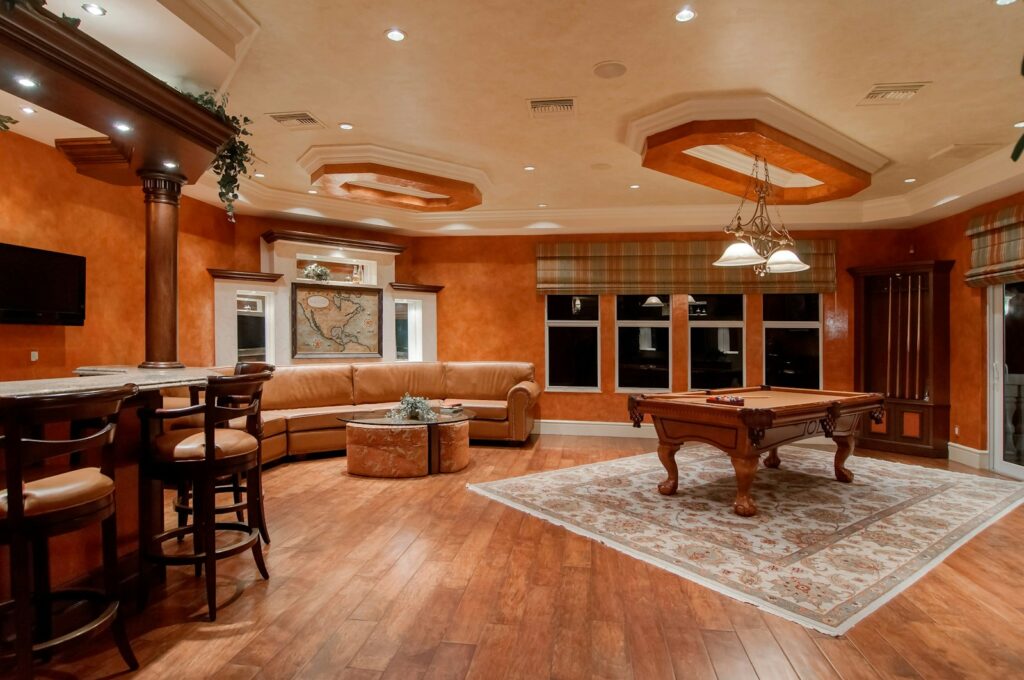The ideal thickness for laminate flooring typically ranges from 8mm to 12mm. Choosing the best thickness for laminate flooring depends on factors such as the level of foot traffic and subfloor condition. For moderate to high traffic areas, opt for 10mm to 12mm for enhanced durability and stability.
Laminate flooring offers an attractive and cost-effective alternative to hardwood. While the aesthetic appeal is crucial, selecting the right thickness is equally important for ensuring longevity and performance. In this article, we’ll explore the various factors influencing the choice of laminate flooring thickness and guide you through the decision-making process.
Laminate flooring thickness is typically measured in millimeters (mm). Common options include 8mm, 10mm, and 12mm. Understanding this measurement is crucial as it directly correlates with the flooring’s durability and stability.

Factors to Consider
Selecting the right thickness for laminate flooring is a nuanced decision that involves considering various factors. Each space has its unique requirements, and understanding these factors is crucial for ensuring the longevity and performance of your laminate flooring. Here’s a detailed exploration of the key factors to consider:
Subfloor Condition
The condition of the subfloor is a fundamental consideration when choosing laminate flooring thickness. A level and even subfloor provide a stable foundation for the laminate installation. If the subfloor has significant irregularities or variations, opting for a thicker laminate, such as 10mm or 12mm, can help compensate for these imperfections. Thicker laminates are more forgiving of minor subfloor irregularities, ensuring a smoother and more durable surface over time.
It’s advisable to inspect and, if necessary, address any subfloor issues before installation to prevent future complications. Failure to address subfloor problems can lead to an uneven surface, compromising the structural integrity of the laminate and affecting its long-term performance.
Room Traffic
The level of foot traffic in a particular room is a critical factor influencing the choice of laminate flooring thickness. Different areas of a home experience varying degrees of activity, and selecting the appropriate thickness based on traffic patterns is essential for ensuring the flooring’s durability.
For spaces with minimal foot traffic, such as bedrooms or guest rooms, an 8mm laminate may be suitable. It provides an aesthetically pleasing and cost-effective option for areas where heavy use is not a primary concern.
Living rooms, dining rooms, and other moderately busy spaces benefit from the durability and stability offered by a 10mm laminate. This thickness strikes a balance between cost and performance, making it suitable for areas with regular but not excessive foot traffic.
Hallways, entryways, and other high-traffic zones require the enhanced durability of a 12mm laminate. Thicker laminates can better withstand the daily wear and tear associated with increased foot traffic, ensuring a longer lifespan and maintaining the flooring’s appearance over time.
Benefits of Different Thicknesses
8mm Laminate Flooring
Ideal for areas with low traffic, 8mm laminate is budget-friendly and suitable for bedrooms and less frequented spaces. However, it may lack the robustness needed for high-traffic zones.
10mm Laminate Flooring
Offering a balance between cost and durability, 10mm laminate is suitable for various applications. It provides a sturdier feel underfoot and is a popular choice for living rooms and moderately busy spaces.
12mm Laminate Flooring
For optimal durability and stability, especially in high-traffic areas, 12mm laminate is the go-to option. It withstands heavy use and provides a more substantial feel, making it suitable for commercial spaces and busy households.
8mm vs 12mm Laminate Flooring
When comparing 8mm, 10mm, and 12mm laminate flooring, several factors come into play. Thicker laminate options, such as 10mm and 12mm, generally offer increased durability, better sound insulation, and enhanced moisture resistance compared to 8mm laminate.
They can better withstand heavy foot traffic, reduce noise transmission between floors, and are more adept at concealing subfloor imperfections. However, thicker laminates often come with a higher price tag and may be slightly more challenging to install.
While all options can provide a range of aesthetic choices, thicker laminate flooring tends to offer a more authentic look and feel, resembling hardwood flooring more closely, particularly in larger rooms. Ultimately, the decision depends on individual priorities, budget constraints, and the specific requirements of the space being floored.
Why Use Thicker Laminate Flooring
- Thicker laminate flooring tends to be more durable and resistant to wear and tear. It can withstand heavier foot traffic, making it ideal for high-traffic areas in homes or commercial spaces.
- Thicker laminate flooring often provides better sound insulation, reducing noise transmission between floors. This can be particularly beneficial in multi-story buildings or apartments where soundproofing is essential.
- Thicker laminate flooring may have better moisture resistance due to its thicker core layers. This can be advantageous in areas prone to moisture exposure, such as kitchens, bathrooms, or basements.
- Thicker laminate flooring can better conceal minor imperfections in the subfloor, providing a smoother and more even surface after installation.
- Thicker laminate flooring typically has a longer lifespan compared to thinner options. It is less prone to warping, bending, or denting over time, providing lasting beauty and functionality.
- Thicker laminate flooring often feels more substantial and solid underfoot, resembling the look and feel of hardwood flooring more closely.
Read More
Laminate Flooring Load Bearing Capacity





